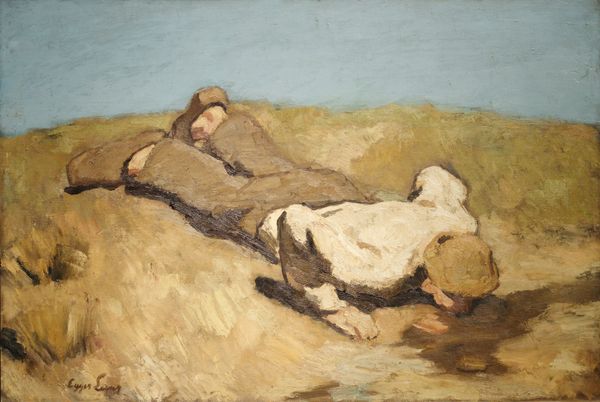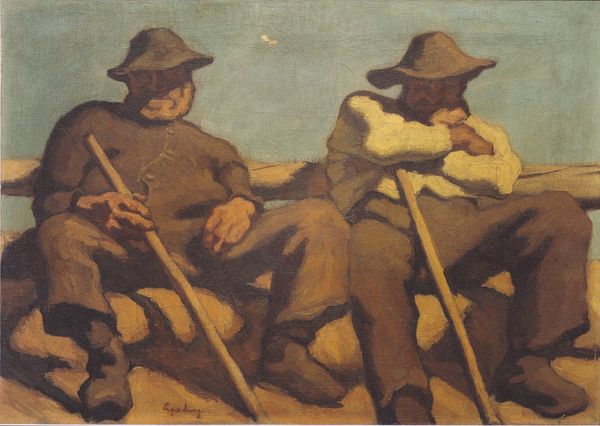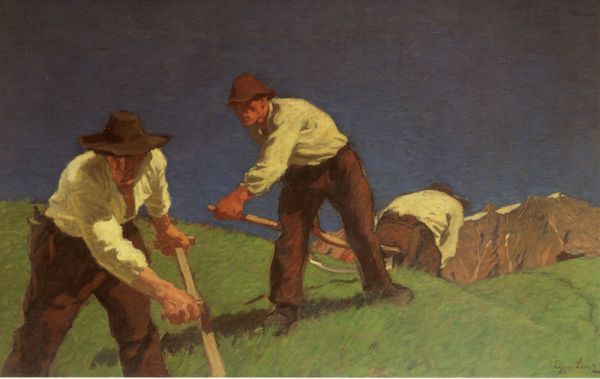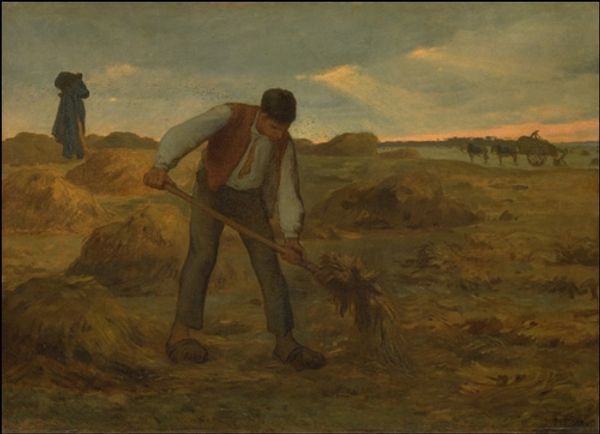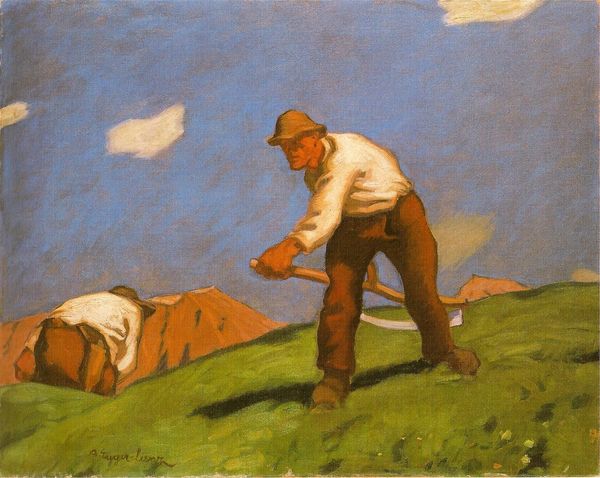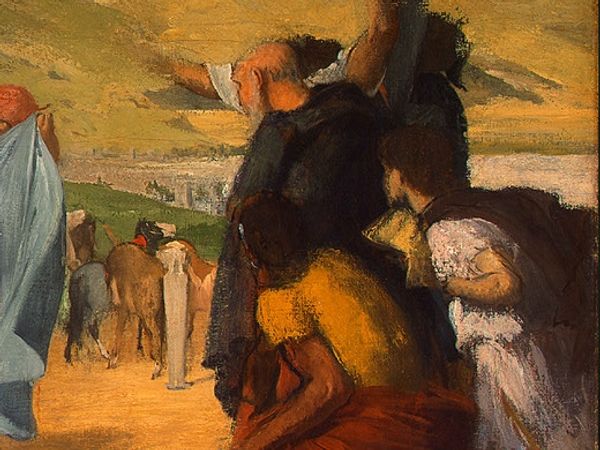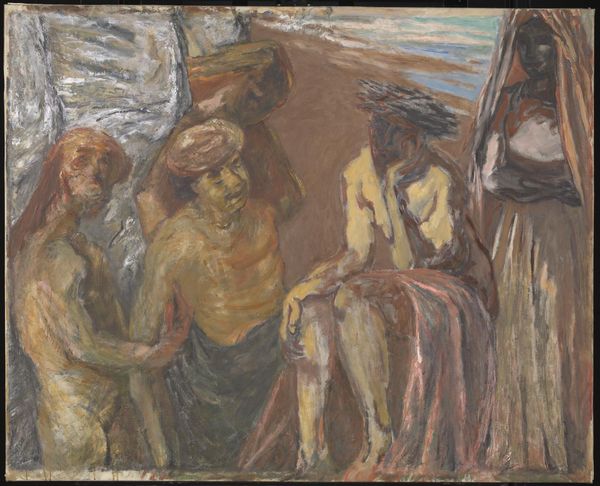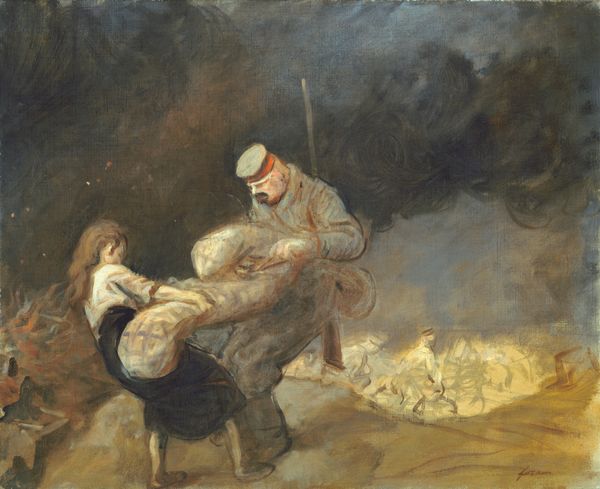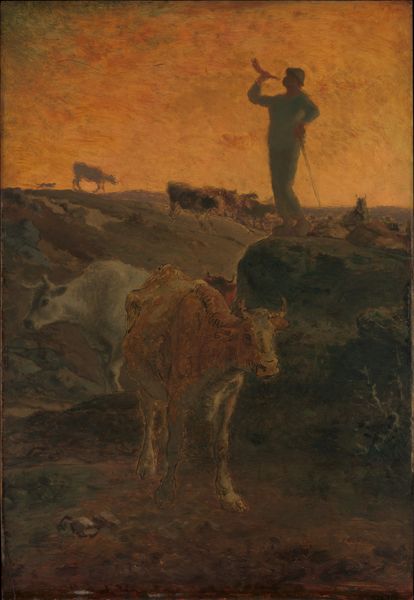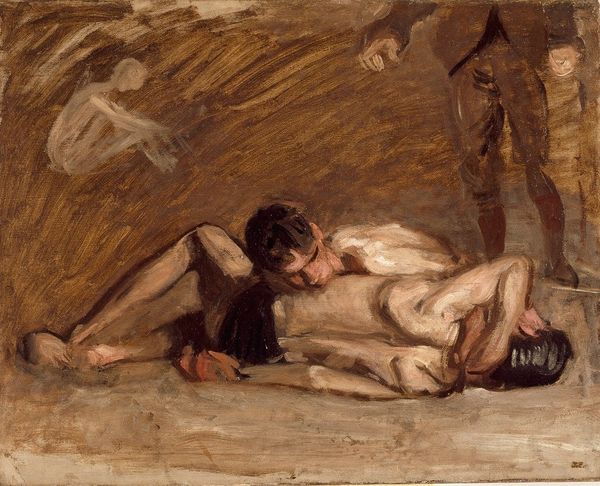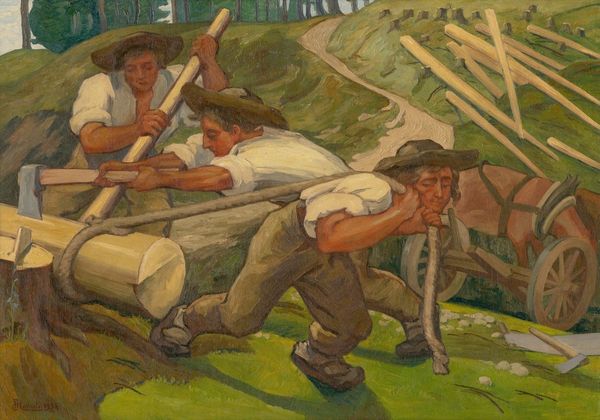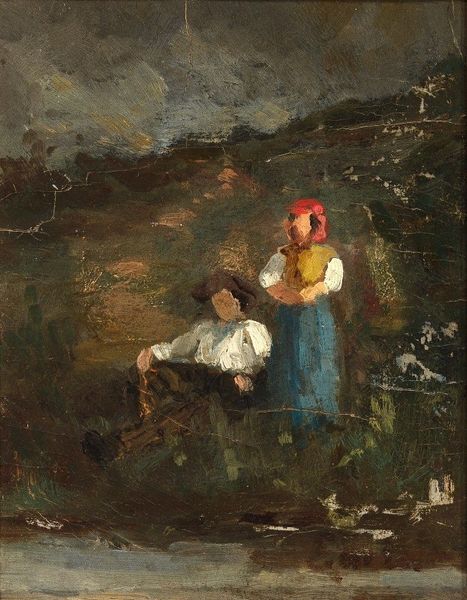
painting, oil-paint
#
painting
#
oil-paint
#
landscape
#
german-expressionism
#
figuration
#
oil painting
#
expressionism
#
realism
Copyright: Public domain
Editor: This is Albin Egger-Lienz’s “Reapers in a Gathering Storm,” created in 1912 using oil paint. The colors are so dark and earthy; it feels somber and heavy, like the storm is pressing down on these workers. What stands out to you most? Curator: The bent postures and close cropping give this a monumental feel. It reminds me of the poses of the damned in late medieval depictions of the Last Judgement, but instead of angels and devils, there is just raw, back-breaking labor. Do you think the artist intended to connect these peasants with some historical archetype of toil? Editor: I can see that. There's something timeless about the struggle they portray. The hats obscure their faces, dehumanizing them almost, reducing them to just their labor. Curator: Precisely! The facelessness acts as a potent symbol. These aren't individual portraits; they’re archetypes of the working class, bound by the never-ending cycle of labor. How do you feel the 'gathering storm' impacts our reading of this symbol? Editor: It amplifies the feeling of dread and inevitability. It's like they're trapped, not just by their work but also by this impending disaster. Nature and labor… both unforgiving. Curator: Yes, nature becomes a symbol of larger, inescapable forces—social, economic, even spiritual. There is very little sense of hope to be found in this composition, only acceptance of one's fate. Editor: It’s interesting how the title adds another layer to what might seem a simple scene. It pulls so much more out of the visual elements. Curator: Absolutely. Words, just like symbols, give weight and resonance to what our eyes initially perceive. We start to recognize the weight of generational farming; these are more than just people toiling. Editor: This makes me see beyond the surface – the symbolic weight transforms the figures into representations of perseverance under duress. Thank you.
Comments
No comments
Be the first to comment and join the conversation on the ultimate creative platform.
